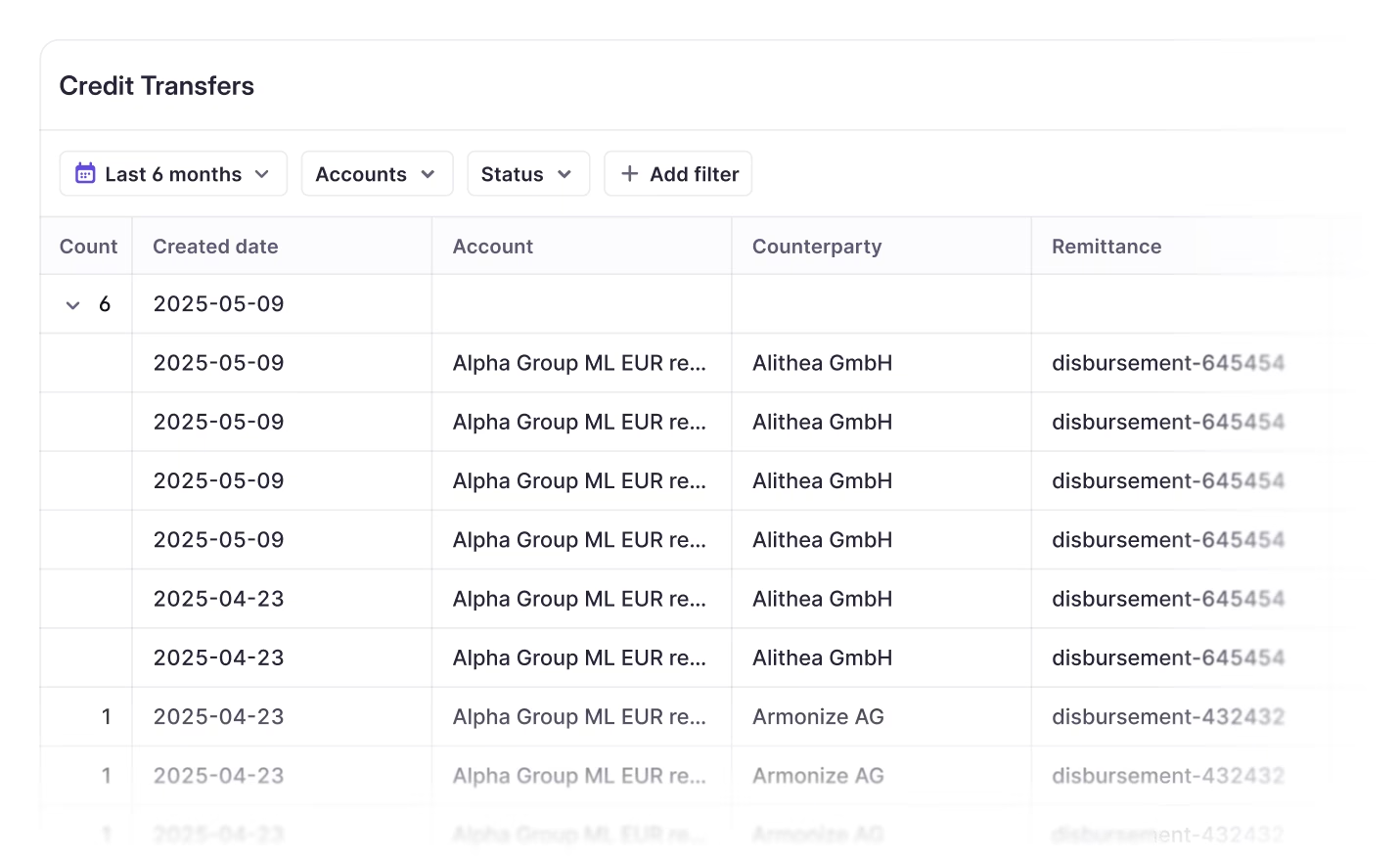What is bank reconciliation?
Bank reconciliation is the process of reconciling your bank statements with your internal financial records.

Introduction to bank reconciliation
Bank reconciliation is the process of comparing your internal financial records to your bank statements. The goal is to ensure all transactions are accounted for accurately and to spot any discrepancies. It is a key task within accounting and is often performed as part of the month-end close process.
In practice, it involves matching records from your bank statement (or another cash account statement) with transactions that have already been posted in your ERP, general ledger, or main accounting record. You take a payment from your bank statement and match it with a specific bill, invoice, or chart of accounts (COA) document.
Bank reconciliation is traditionally and most commonly performed using bank statements, but not always. As companies increasingly use other systems to send and receive payments, such as online payment platforms, there is a need to apply the same reconciliation process to the cash processed in these systems too.
The difference between bank reconciliation and a cashbook
Bank reconciliation and a cashbook are the external and internal reflections of your financial position. A cashbook is a record of your cash receipts and payments, tracking deposits and withdrawals. Bank reconciliation is the act of comparing your bank balance to the balance in your cashbook. The balance in your cashbook may also be referred to as your book balance.
Common applications of bank reconciliation
Bank reconciliation is crucial for maintaining the integrity of your financial data and preventing fraud. Here are some uses of a bank reconciliation statement:
Spotting errors
Regular bank reconciliations help ensure your financial records match your bank statements. This is vital for preparing reliable financial statements and making business decisions.
Detecting fraud
By comparing your records with bank statements, suspicious activity such as unauthorized transactions, repeated errors, or other discrepancies can be detected early.
Managing cash flow
Accurate bank reconciliations provide a clear picture of your cash flow, confirming you have sufficient funds for your operations and investments.
Ensuring compliance
Regular bank reconciliation helps you comply with accounting standards and regulations by ensuring your records are up-to-date and accurately reflect your financial position.
The bank reconciliation process
Once you’ve gathered all your bank statements for the period you’re reconciling and confirmed your records are complete and up-to-date, the process is as follows:
- Find the closing balance from the previous period.
- Match the transactions recorded in your company's books with those in the bank statement.
- Compare transactions and identify discrepancies such as outstanding payments or deposits, bank errors, and internal company errors.
- Adjust discrepancies.
- Compare adjusted balances to confirm they now match.
A note on adjusting discrepancies
There are several reasons you might find a discrepancy between your internal books and your bank statements such as fees charged by your bank or interest earned. Once you’ve indentured these, you’ll need to adjust the statement and book balance. The final result is known as your adjusted bank statement and adjusted book balance.
Bank-ERP reconciliation
Many companies with a higher volume of transactions choose to invest in ERP software with a general ledger module, enabling them to centralize their transaction data in a single source of truth. Traditionally, companies that use ERP software upload their bank statements, or bank feeds, into their ERP system and match the transactions manually line by line.
The typical process is as follows:
- Retrieve your bank feeds by manually logging into all of your banking and payment portals.
- Format the bank data so it meets the requirements of your ERP system.
- Upload the bank feeds to your ERP system.
- Match ERP transactions with your bank statements line by line and investigating and resolving any discrepancies.
It may be possible to connect your ERP directly to your banks in an effort to automate some of this process. However, since ERP systems are not specialized in building and maintaining bank connectivity it often requires extensive in-house engineering work and the connections will need to be maintained over time. For more information, head to the ERP treasury module section of our in-depth guide to treasury systems.
Example of bank reconciliation in action
Here's an example to illustrate bank reconciliation in practice. In this instance, you start by comparing your bank statement with your book balance, meaning your cash balance according to your accounting records:
- Bank statement: €5,000
- Book balance: €4,500
After comparing the records, you find the following discrepancies:
- Outstanding withdrawals: €600
- Outstanding deposits: €400
- Bank fees: €50
You will need to review and adjust your bank statement and internal records to account for these discrepancies, giving you your adjusted (or calculated) bank balance and book balance respectively.
Adjusting the bank statement
- Bank statement: €5,000
- Minus outstanding withdrawals: €600
- Plus outstanding deposits: €400
- Adjusted bank balance: €4,800
Adjusting your records
- Book balance: €4,500
- Minus bank fees: €50
- Adjusted book balance: $4,450
As you can see, the adjusted balances don’t match. This means you’d need to investigate further to reconcile the €350 difference. The aim of bank reconciliation is to identify all discrepancies and adjust your records accordingly until the difference between the adjusted bank balance amount and the adjusted book balance amount equals zero.
Pitfalls in bank reconciliation (and how to avoid them)
Bank reconciliation can be complex and time-consuming, especially if you have a high volume of transactions and insufficient tooling. Below are some common challenges and how you can avoid them.
Timing differences
The timing of the transactions recorded in your company’s books might not match the processing times of your bank. These discrepancies are fixed by making the necessary adjustments.
Manual errors
Errors in data entry or recording transactions can lead to discrepancies. Accurate record-keeping, combined with smart accountancy tools, is essential to minimize these errors.
Bank errors
Although less common, these do happen so you have to be vigilant when going through your bank statements.
Unrecorded transactions
Transactions such as bank fees, interest, and payments might not be recorded in your books straight away. Ensure all information is included, even if the deposit or withdrawal is still outstanding.
How Atlar can help with your bank reconciliation
Thanks to native integrations with ERP systems like Oracle NetSuite and Microsoft Dynamics 365 Business Central, Atlar enables its customers to greatly simplify bank reconciliation.
Atlar customers can automatically import bank statements from any bank directly to their ERP system, removing the need for manual imports. This can be done with any bank connected to Atlar, enabling customers to reliably sync financial data between their banks and their ERP.
Customers can also simplify payment runs by automatically paying vendor bills from their ERP directly in Atlar – with all transaction data fed back into your ERP system, streamlining reconciliation. This lets customers avoid having to manually enter payments in one or more online banking portals. To learn more, explore our accounts payable feature page or get in touch with our team.
You can unsubscribe anytime.
Further reading
See Atlar in action.
Enter your work email to watch a live product demo.


